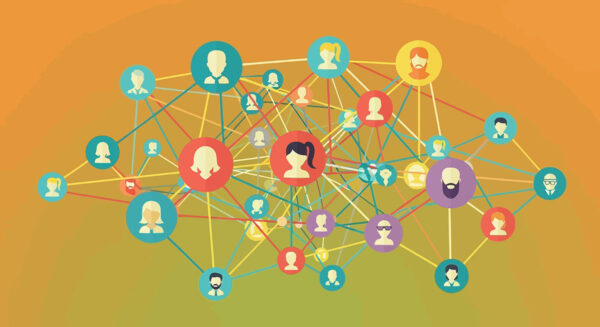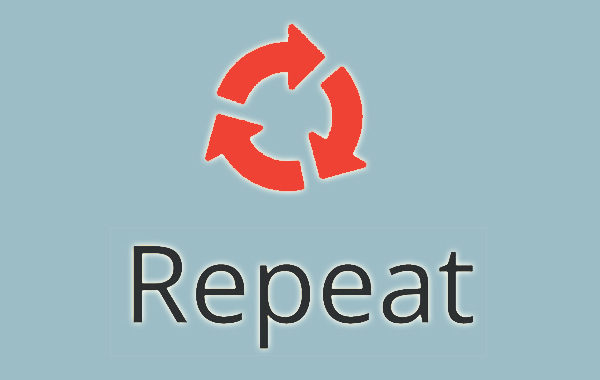The following is a hand-picked guest post from Clay Buck. Enjoy, and you can read more about Clay below.
***
Let’s play a quick game.
Which of these would you trust more?
- An AI navigator that says, “Turn left now,” just as you drive into a lake.
- Or a paper map from 1993 that at least *tries* to tell the truth.
If your donor database isn’t clean, your fundraising is doing the same thing as that navigator: confidently giving bad directions. And that’s not just annoying – it’s expensive.
So let’s talk about something most fundraisers don’t get super excited about: data hygiene.
Yes, I know. It’s not flashy. It doesn’t come with confetti or applause. But keeping your donor data clean and up-to-date might be the single most important thing you do to raise more money.
Let me show you why.
Why Dirty Data Is Costing You Money
Picture this: you spend hours writing a beautiful appeal letter. You print it on nice paper. You add a lovely reply card and envelope. You fold it all perfectly and send it out with hope and a postage stamp.
And it gets returned because the address was wrong.
Or worse – it goes to the wrong person entirely. Or uses the wrong name. (“Dear Occupant” never exactly tugs the heartstrings.)
Every returned letter is wasted money. Every wrong name is a little nick in your donor’s trust. And every outdated email or phone number is a missed chance to connect.
It adds up fast. Some studies estimate that the average nonprofit loses 8-10% of its fundraising revenue to bad data.
That’s money you could be spending on programs. On salaries. On stamps that *actually* reach people.
That’s time you or your team are spending editing and cleaning data on the fly – time that could be much better spent scrounging the breakroom for leftovers. (Or, you know, writing those thank you notes you haven’t had time to get to.)
What Do We Mean by “Clean Data”?
Clean data just means this:
- It’s accurate.
- It’s up to date.
- It’s complete enough to do your job well.
That’s it.
You don’t need a PhD in database wizardry. You just need to make sure the basics are solid:
- People’s names are spelled correctly
- Addresses are current
- Emails work
- Gifts are recorded in the right place
- Notes are consistent
Think of your database like a campfire. Your donors gather around it to support your cause – and they’ve shared some of their stories to keep the fire burning. Their address? That’s a breadcrumb of who they are. Their giving history? A reflection of what matters to them. Every piece of data is a detail they’ve chosen to share.
We talk a lot about the stories we *tell* our donors. But data? That’s how they tell *their* stories to us.
So if our data is messy, we’re not just making our jobs harder – we’re ignoring their story. And betraying their trust.
Clean Data Builds Trust
Let’s say you send a thank-you letter, and it includes:
“Dear Sarah, thank you for your $100 gift made on February 28 toward our literacy program. You’ve made a real difference in helping kids learn to read.”
Sarah will feel seen, valued, and appreciated.
Now imagine that same letter said:
“Dear Supporter, thank you for your gift. You are helping.”
Sarah’s checking her watch and wondering if you even noticed her at all.
When your data is clean, you can personalize every message. And personalized messages build relationships.
And relationships? They’re what fundraising is *actually* all about.
The ROI of Clean Data (a.k.a. The Math That’ll Blow Your Mind)
Let’s talk numbers – and I promise, no calculator required.
Say you have a list of 1,000 donors. Over the course of a year, they give a combined total of $100,000. That’s an average of $100 per donor.
Now let’s say 10% of that data is bad. Maybe the addresses are outdated, the emails bounce, or the names are wrong. That’s 100 donors you can’t reach.
And if you can’t reach them, you can’t raise money from them.
So, 100 donors x $100 each = $10,000 in lost revenue. Just because your data wasn’t clean.
But it doesn’t stop there.
Next year, those 100 donors are still missing. And maybe another 10% drop off. Now you’ve lost another $10,000.
That’s $20,000 in lost potential.
And the next year? $30,000.
It *compounds* – like interest, but backwards.
You’re not just losing money once. You’re losing it over and over again, every year that donor can’t be contacted, can’t be thanked, can’t be invited to give again.
This is the hidden cost of bad data. And it’s real.
On the flip side? Clean your data, and you’re not just raising more money today – you’re building a stronger base for next year, and the year after that.
Common Excuses – And Why They Don’t Hold Up
“I don’t have time.”
You also don’t have time to keep redoing mailings that bounce. Or to fix angry donor calls. Or to spend hours searching for info you *should* have at your fingertips. Or finding new-and-theoretically-‘better’ donors.
“I’m not good with tech.”
Good news: data hygiene isn’t about knowing all the buttons. It’s about habits. Like checking addresses when donors call. Or confirming names before merging lists. You don’t need to be fancy. You just need to be consistent.
“It’s not my job.”
Actually, it is. If you’re a fundraiser, your job is to connect with donors – and that only works when the data behind the scenes is solid.
Think of your database like your kitchen. You don’t have to love scrubbing it, but if it’s full of crumbs and sticky spots, cooking’s going to be a lot harder.
Easy Wins to Clean Up Your Data
- Use a consistent naming format.
- Verify addresses annually.
- Remove duplicates.
- Check bounced emails.
- Log every interaction.
- Make it someone’s job
- Run regular cleaning and appends like NCOA, de-duplications, standardization, phone and email validation, etc. (Shameless plug, if you need help with this, Next River Fundraising Strategies can help. It’s quick, relatively painless and, honestly, a lot less expensive than you think.)
Bonus tip? Turn it into a game: once a month, see who can find and fix the most errors. Winner gets coffee. Loser still gets clean data.
A Final Word (With Feeling)
You don’t need to love spreadsheets.
You don’t need to know all the tech.
But if you care about your mission – if you care about your donors – then keeping your data clean is one of the best things you can do.
It’s how you make sure your messages land.
It’s how you show people they matter.
It’s how you raise more money, more consistently, with less stress.
And maybe most importantly – it’s how you show your donors that you’re listening. That their story matters. That the data they’ve shared with you is being cared for, protected, and used with purpose.
Clean data isn’t just tidy.
It’s powerful.
It’s personal.
And it pays off.
***
Steven says, “Clay is the founder and principal of Next River Fundraising Strategies, creator of the Fundraiser’s Planner, and co-host of the #1 ranked fundraising podcast Fundraising is Funny. He’s a wide-eyed optimist about the power of generosity to change the world and focuses primarily on individual giving, strategic planning, and building the systems and storytelling that support and empower successful, ethical fundraising.”









